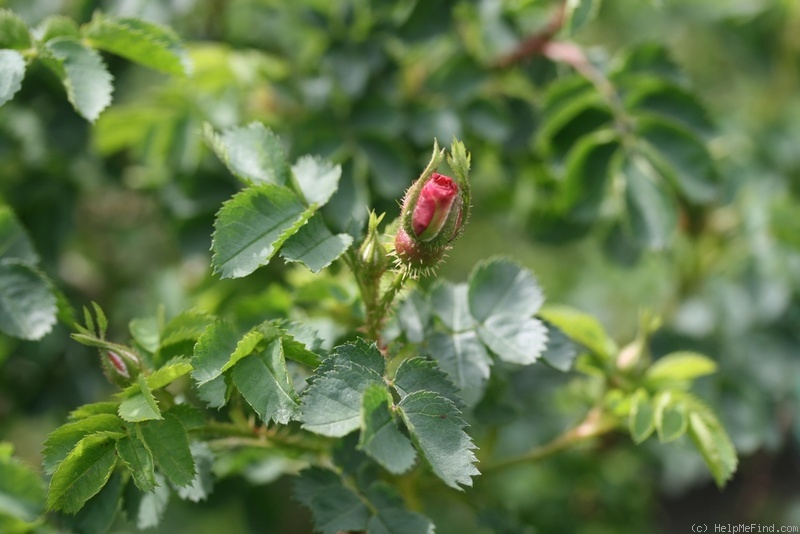|
|
'Schottische Zaun-Rose' Description

Photo courtesy of Marnix
HMF Ratings:
108 favorite votes.
Average rating:
EXCELLENT.
Origin:
Introduced in Australia by Camden Park in 1850 as 'R. rubiginosa'.
Class:
Hybrid Rubiginosa, Species / Wild.
Bloom:
Light pink. Bristly glandular pedicel. Strong, green apple fragrance. 5 petals. Average diameter 1.5". Single (4-8 petals) bloom form. Once-blooming spring or summer. Fragrant buds.
Habit:
Arching, armed with thorns / prickles. Fragrant foliage. 5 to 7 leaflets.
Height: 6' to 15' (185 to 455cm). Width: 5' to 8' (150 to 245cm).
Growing:
USDA zone 4b through 9b. Drought resistant. produces decorative hips. shade tolerant. Disease susceptibility: very disease resistant.
Patents:
Patent status unknown (to HelpMeFind).
Parentage:
If you know the parentage of this rose, or other details, please contact us.
Notes:
R. rubiginosa Linnaeus (1771) Foliage smells like apples.
Rosa villosa is the species most usually called the Apple Rose, because its hips look like small apples. In a few European countries, R. rubiginosa is sometimes also known as the Apple Rose because the leaves and buds smell like apples.
From Roses of America, p. 41: One of the most famous references to it is in Shakespeare's A Midsummer-Night's Dream, where Oberon describes Titania's bower:
I know a bank where the wild thyme blows,
Where oxlips and the nodding violet grows;
Quite over-canopied with luscious woodbine,
With sweet musk-roses and with eglantine.
The Eglantine is a European species, but its history of use as a root stock for many rose varieties means that it has naturalized (sometimes invasively so) beyond its native range, including to North and South America, Australasia, and Southern Africa.
|